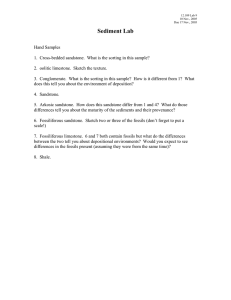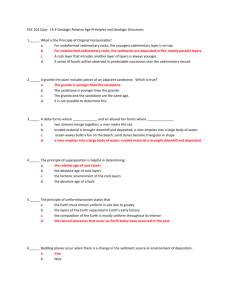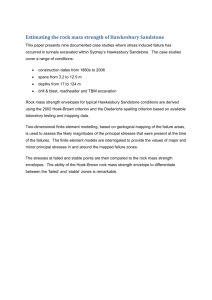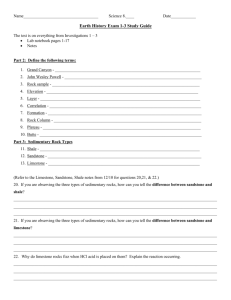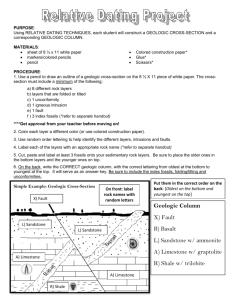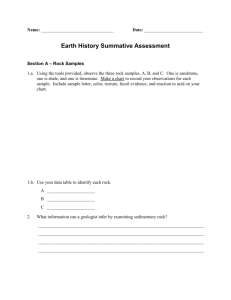Relative Dating Worksheet: Geology & Earth Science
advertisement
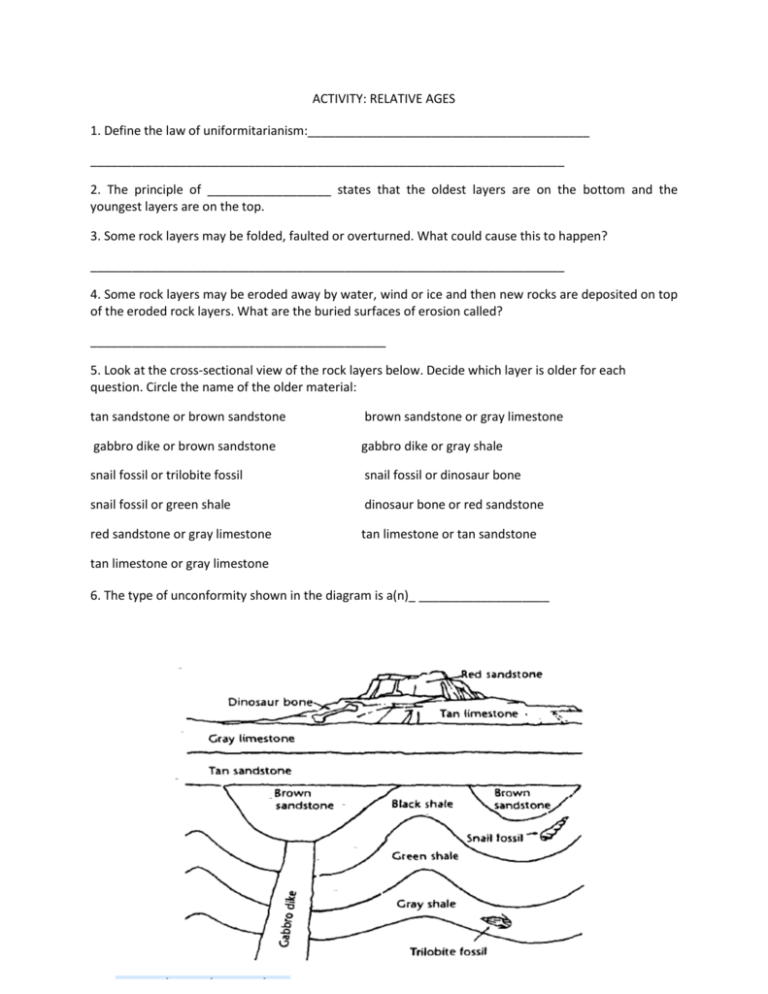
ACTIVITY: RELATIVE AGES 1. Define the law of uniformitarianism:_________________________________________ _____________________________________________________________________ 2. The principle of __________________ states that the oldest layers are on the bottom and the youngest layers are on the top. 3. Some rock layers may be folded, faulted or overturned. What could cause this to happen? _____________________________________________________________________ 4. Some rock layers may be eroded away by water, wind or ice and then new rocks are deposited on top of the eroded rock layers. What are the buried surfaces of erosion called? ___________________________________________ 5. Look at the cross-sectional view of the rock layers below. Decide which layer is older for each question. Circle the name of the older material: tan sandstone or brown sandstone brown sandstone or gray limestone gabbro dike or brown sandstone gabbro dike or gray shale snail fossil or trilobite fossil snail fossil or dinosaur bone snail fossil or green shale dinosaur bone or red sandstone red sandstone or gray limestone tan limestone or tan sandstone tan limestone or gray limestone 6. The type of unconformity shown in the diagram is a(n)_ ___________________

